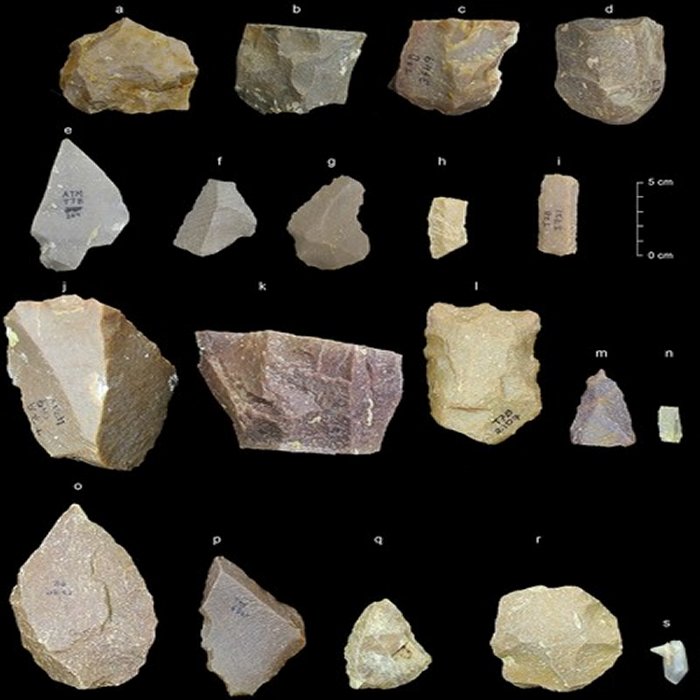Ancient Stone Tools Found In India Suggest Humans Ancestors May Have Left Africa Much Earlier Than Previously Thought
AncientPages.com - Over 7,000 stone tools were unearthed in excavations at archaeological site at Attirampakkam, about 60 kilometers from Chennai in the southern Indian state of Tamil Nadu.
The tools were used by human ancestors between 385,000 to 172,000 years ago, but it is unknown who created these tools.

A sample of artifacts from the Middle Palaeolithic era discoverded at the Attirampakkam archaeological site in southern India. (Photo credit: Sharma Centre for Heritage Education, India
No hominin remains were discovered at the site, according to Shanti Pappu of the Sharma Center for Heritage Education, who led the Indian-French excavation works.
See also:
Earliest Modern Human Fossil Outside Africa Unearthed At Misliya Cave, Israel
The earliest evidence for modern humans suggests Homo sapiens arose in Africa at least 300,000 years ago. Later, they left the continent to colonize the globe, but scientists are divided on when and how. It is also not certain if it was a single or multiple dispersals.
A recent discovery of a jawbone fossil in Israel reported last week suggested humans left Africa as early as about 180,000 years ago. But the Indian discovery, which was published in the scientific journal Nature, suggests there could have been a migration even before that.
The archaeologists found tools made with a distinct and sophisticated tool-making technique of the Middle Paleolithic known as Levallois that began replacing clunkier and more primitive stone tools from Acheulian technologies of around 400,000 years ago.
Modern humans' related ancestors, collectively known as hominins, started making heavy stone tools at least 1.75 million years ago. The Levallois technique, including sophisticated blades chipped from chunks of quartz, for example, could be used to make spears and was believed to have first developed roughly around 300,000 to 400,000 years ago by archaic or possibly modern humans in Africa and Europe.
In India, it was thought to have come only around 125,000 years ago.
The new finding suggests "fully-fledged Middle Paleolithic culture" existed in India around the time as human migration out of Africa, according to the researchers.
That might imply that the migrations occurred earlier than had previously been thought and/or that local influences had a role in the development of the Middle Paleolithic in India.
"Understanding the transition to the Middle Paleolithic outside Africa and Europe is vital to the study of the lives and times of humans in Eurasia, especially, the appearance and subsequent migrations of anatomically modern humans within and out of Africa,” according to Shanti Pappu.
"The number and nature of dispersals of populations bearing a Middle Paleolithic culture from Africa is not a simple, linear model but is far more complex."
AncientPages.com




















